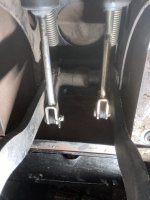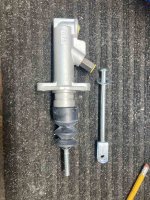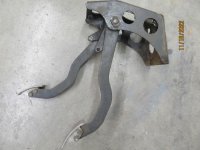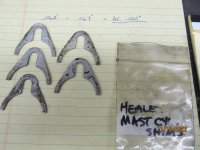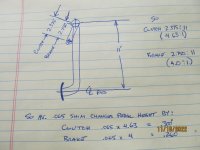I will be replacing the brake master cylinder on my bn6 and can not find any information on setting the push-rod free play. There is no adjustment on the rod and while the service manual mentions free play, it does not describe how to adjust.
Attached is a photo of the existing MC pushrod under the dash. There is no length adjustment. And the photo of the replacement MC shows two pushrods, one with no adjustment, and the threaded one which is not applicable for my setup installing in a 1959 bn6.
How is the freeplay adjusted?
Alan
Attached is a photo of the existing MC pushrod under the dash. There is no length adjustment. And the photo of the replacement MC shows two pushrods, one with no adjustment, and the threaded one which is not applicable for my setup installing in a 1959 bn6.
How is the freeplay adjusted?
Alan

 Hi Guest!
Hi Guest!

 smilie in place of the real @
smilie in place of the real @
 Pretty Please - add it to our Events forum(s) and add to the calendar! >>
Pretty Please - add it to our Events forum(s) and add to the calendar! >> 
